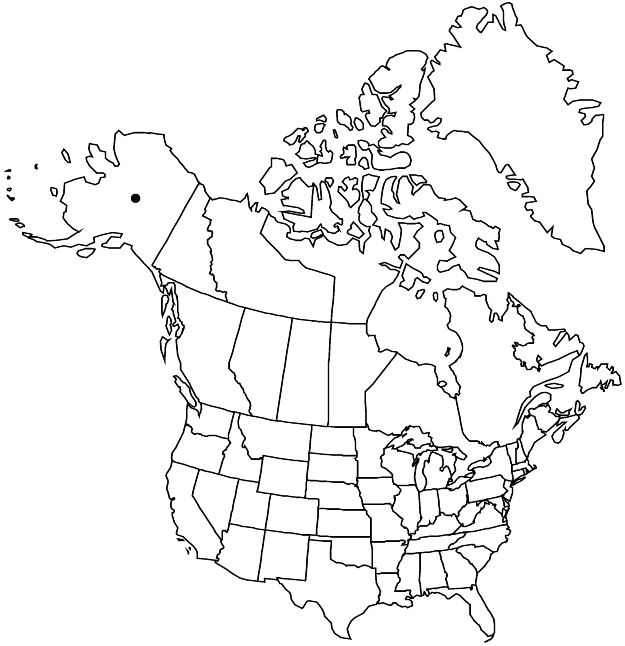familyRosaceae
subfamilyRosaceae subfam. Rosoideae
genusRosa
subgenusRosa subg. Rosa
sectionRosa sect. Rosa
speciesRosa acicularis
subspeciesRosa acicularis subsp. acicularis
Rosa acicularis subsp. acicularis
Treatment appears in FNA Volume 9. Treatment on page 114.
Leaves: stipule auricles 4–8 mm wide; petiole and rachis rarely with pricklets; leaflets 5 (or 7), margins 1(–2+)-dentate-serrate, teeth 11–25 per 1/2 blade, eglandular, abaxial surfaces eglandular. Pedicels densely stipitate-glandular. Sepals usually to 3 mm wide at bases, abaxial surfaces usually stipitate-glandular, sometimes eglandular. 2n = 56.
Phenology: Flowering May–Jun.
Habitat: Timberlines, larch-birch and pine forests, stony glades, grassy meadows, watersheds
Elevation: 1500–2800 m
Distribution

Alaska, Eurasia.
Discussion
At least one collection from central Alaska has been confirmed as subsp. acicularis on both morphological and cytological evidence (W. H. Lewis 1958). Other reports from Alaska, and Yukon, need confirmation as to whether they are octoploid (2n = 56) subsp. acicularis plants or hybrids with hexaploid subsp. sayi individuals, forming 2n = 49 septaploids.
Selected References
None.
Lower Taxa
None.